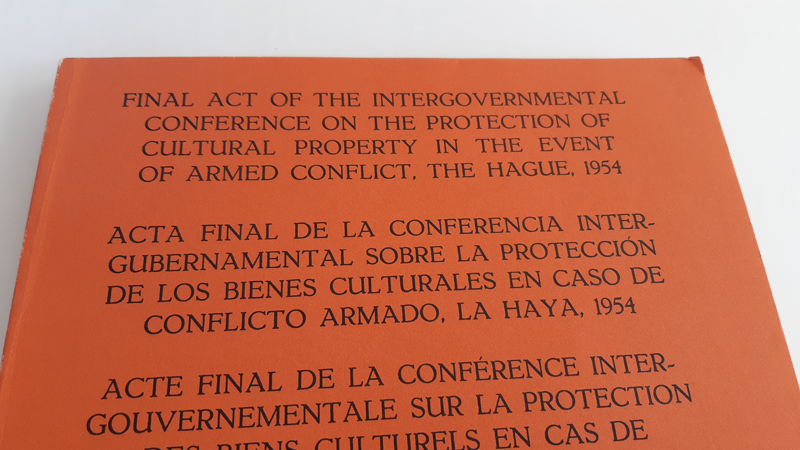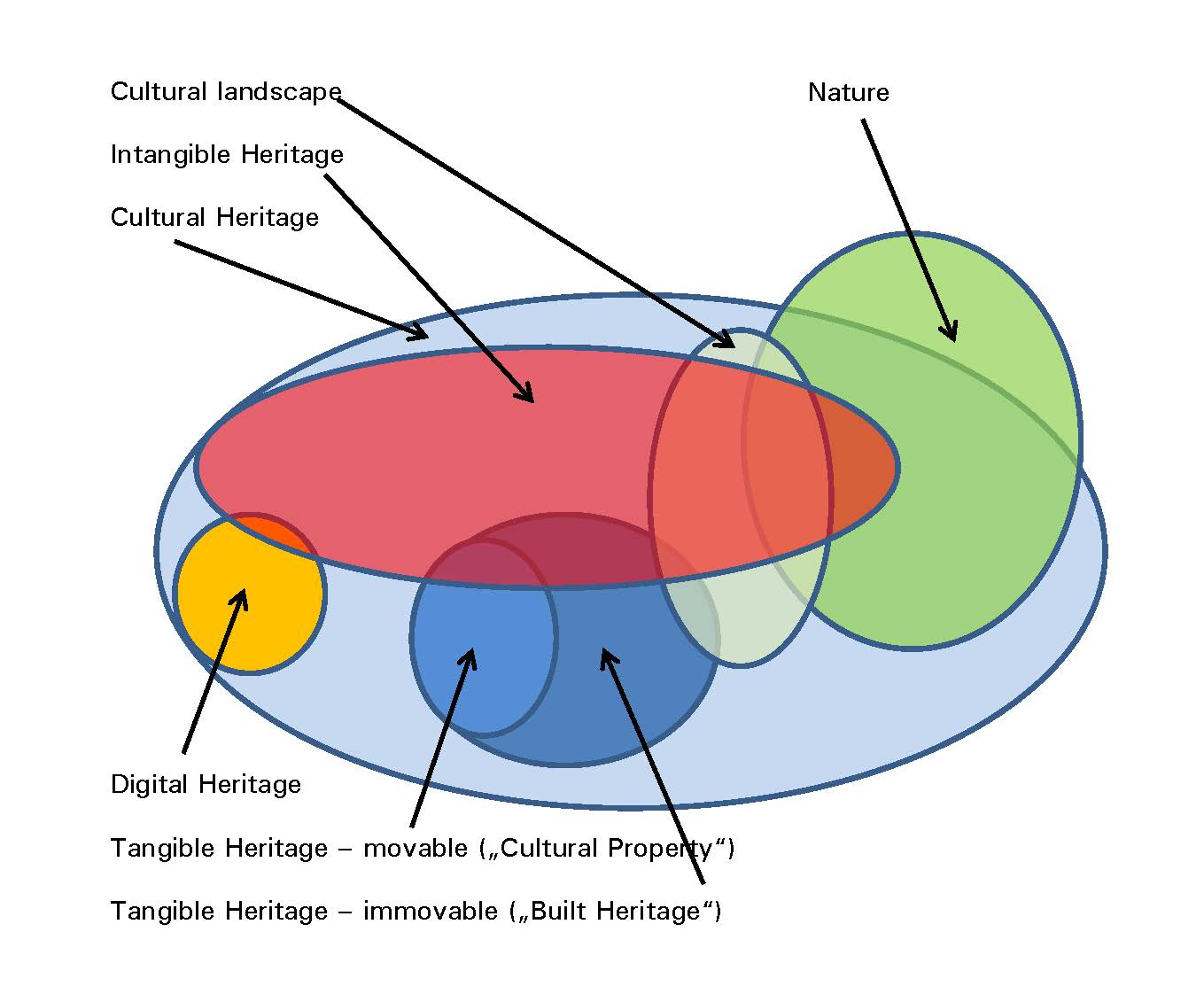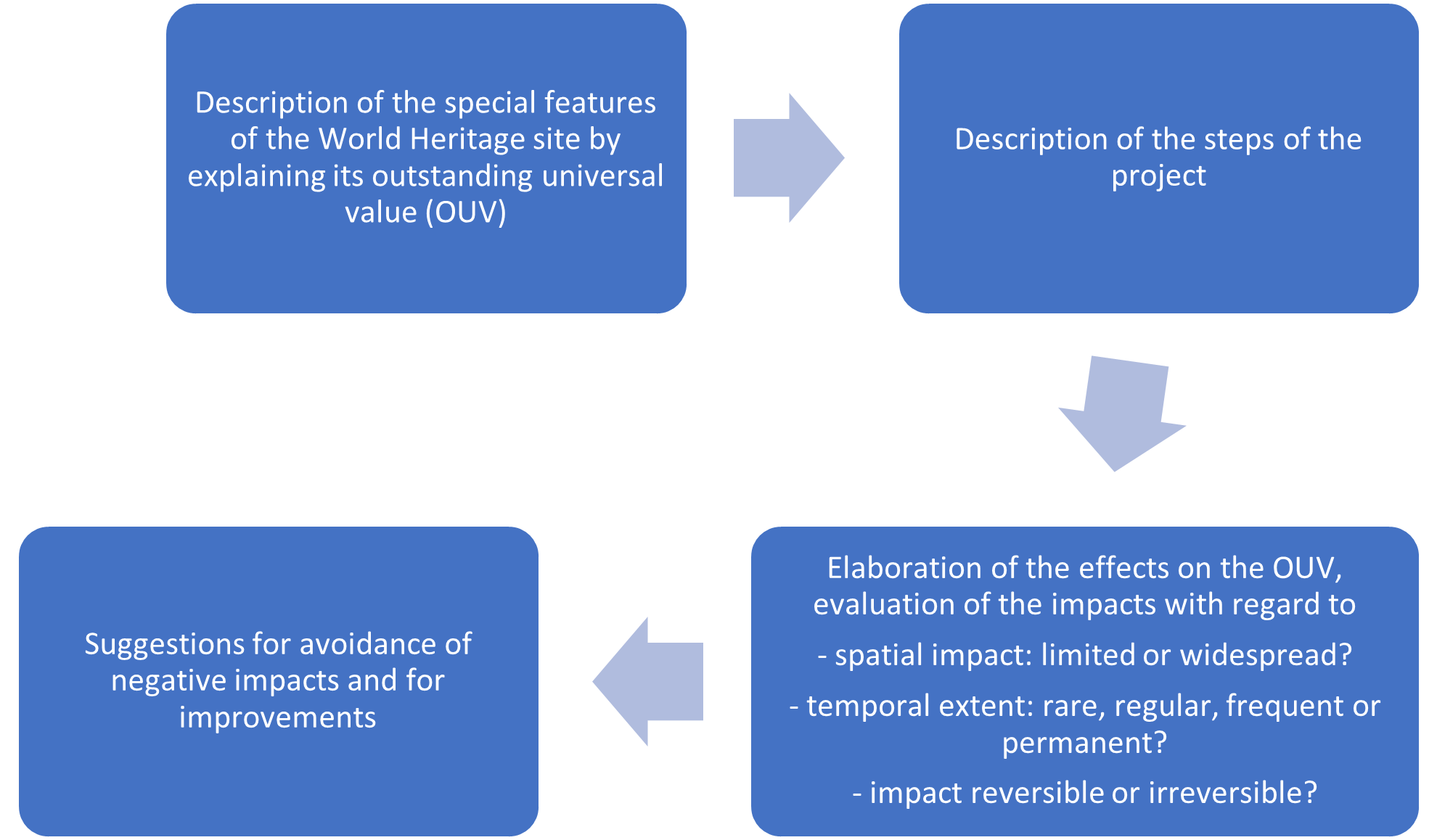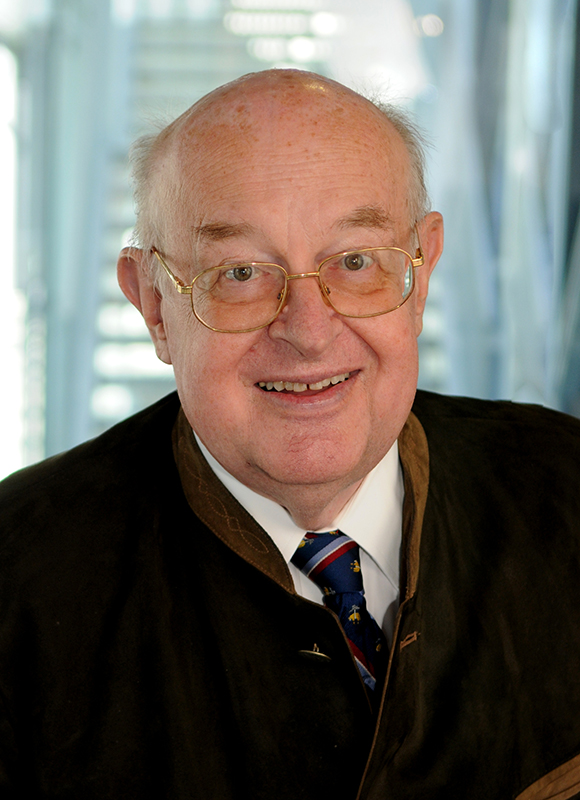Jiří Toman Center for Cultural Heritage and Humanitarian Norms
The Center was established at the University of Continuing Education Krems in 2023 and named after the former employee of the Department of Building and Environment, Prof. DDr. Jiří Toman (1938-2020).
The core of the Center is Jiří Toman's scientific library, which he bequeathed to the University of Continuing Education Krems during his lifetime. The approximately 4,000 volumes offer a cross-section of international law with a focus on the protection of cultural property, human rights, humanitarian law, dispute resolution and the law of international organisations. Further donations of books and archives from Prof. Dr Bernd von Droste zu Hülshoff (founding director of the UNESCO World Heritage Centre in Paris) and from the scientific head of the Jiří Toman Center on World Heritage and law complete the extensive collection.

© UWK/Peter Strasser
Final Act of the Intergovernmental Conference on the Protection of Cultural Property in the Event of Armed Conflict, The Hague, 1954
THE ACTIVITIES OF THE CENTER
The Jiří Toman Center conducts research at the interface between the preservation of cultural heritage, human rights, humanitarian law, and the activities of international organizations in a global context. To this end, the center catalogues the extensive library and archives of Jiří Toman and of other donors and make them accessible to the public. Even though the Center itself does not offer study programmes, its members regularly contribute to the transfer and exchange of knowledge and discourse on these exciting topics through lectures, presentations and the supervision of Master's theses.
.2024-01-30-15-49-50.jpg)
© UWK/Peter Strasser
„Universe of Cultural Heritage“
APPLIED RESEARCH
Members of the Center have been working for many years in the Department of Building and Environment on research projects in the field of cultural heritage and World Heritage management, like Heritage Impact Assessments (HIA) for planned interventions in World Heritage sites, feasibility assessments regarding "enhanced protection" under the Second Protocol 1999 to the 1954 Hague Convention, and advice on the preparation of management and hazard mitigation plans for cultural sites. The work experience, which the staff of the Center has gained as former employees of international organisations in the fields of Heritage protection, human rights, good governance, peacekeeping and sustainable development, underlines the Center's global focus.
.2024-01-30-15-49-54.png)
© UWK/Peter Strasser
Schematic Procedure of a World Heritage Impact Assessment
Professor Jiří Toman
%20Andrea%20Reischer.2020-04-20-19-09-13.jpg)
Prof. Toman was born in Prague in 1938 and received his doctorate in law in Prague (1966) and in political science in Geneva (1981), furthermore, he studied at the Graduate Institute of International Studies in Geneva. In 1969, he joined the Henry Dunant Institute at the International Committee of the Red Cross in Geneva as researcher and held several management positions there. He also worked as court interpreter and as lecturer at various universities. For many years he also served as a consultant to UNESCO and the UN Disaster Relief Organization (UNDRO). When he retired as Director of the Institute in 1998, he was appointed to the Chair of International Law at Santa Clara University in California, a position which he held until 2018. From 2016, he was visiting professor at the Department of Building and Environment at the University for Continuing Education Krems. In April 2020, he died in Geneva as a result of COVID-related illness. At his request, he was laid to rest at the cemetery in Krems-Stein.
Professor Toman has researched, taught, and published on international law with a focus on human rights, humanitarian law and international relations. With his commentaries on the 1954 Hague Convention for the Protection of Cultural Property in the Event of Armed Conflict and on its Second Additional Protocol of 1999, he created standard works on international cultural property protection law. In these publications, for the first time two fundamental international cultural heritage agreements were analysed and commented on in a broad context.
Tags